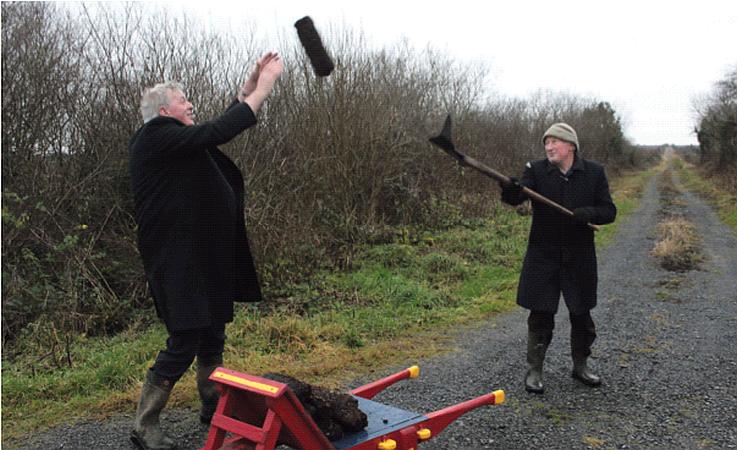-
-
Author: Cian O'Connell
~ 6 minutes read
By Cian O’Connell
At the centre of Carrownagappul Bog, surrounded by deep peat, lies a small island topped with soil that is known to locals in Mountbellew as Patch’s Garden.
In the early 1900s, a man named Patch Cronin lived and worked on the bog. At that time, there were no roads linking his home to the outside world, but his small plot allowed him to grow fruit and vegetables and, of course, cut turf.
Nowadays, a local bog committee oversees the rewetted and restored land of Carrownagappul. One of its spearheads is Paul Connaughton, the former Fine Gael TD and Minister who cut turf from the bog for decades.
When it was announced in 2011 that measures would be introduced to limit the practice across the country, there was outrage among the community of Mountbellew. Twelve years on, they promote the bog as an environmental attraction and welcome students and tourists to experience its wildlife year-round.
“Time will always do that, you know,” Paul says. “When I was a member of Dáil Éireann for a couple of years, before I left, some of the biggest public meetings I was ever at in East Galway was about the bogs. At that time, it was so installed into people’s minds that not alone did they not want to talk to the officers of the National Parks and Wildlife [Service], butthey nearly got to the stage where they’d hang every TD in the constituency if they thought they weren’t working on their behalf. It is the most intractable problem I have come across in 35 years.”
Bog restoration is once more at the forefront of Irish climate policy. After drawn-out negotiations, an agreement was reached on the EU’s Nature Restoration Law (NRL) last month to ensure member states have to implement measures to restore 20% of depleted EU land and sea areas by 2030.
This news is of particular interest to Ireland, which has been the worst country in the world for wetland depletion over the last three centuries.
An estimated 350,000 hectares of Irish lowlands were once covered by raised bogs – sprawling wetland habitats that, through advanced mechanisation and commercial exploitation, have largely been drained and dried out.
Dubbed carbon sinks, raised bogs are particularly good at storing the chemical element. The peat that covers over 20% of the Irish landscape is thought to hold more than 1,000 million tonnes of carbon.
For context, a standard car emits roughly 4.6 metric tonnes of carbon into the atmosphere every year. As a result, burning and even just digging up large quantities of turf from raised bogs can produce enormous carbon emissions.
“The idea is that with the sphagnum mosses – the white stuff you see on the top of the bog – that will grow every year and it will die every year,” Paul says of rewetting Carrownagappul.
“But it’ll also mean that the surface of the bog will begin to come back up to where it was 100 years ago. That might take 200 years to happen.
“When I was a young lad now, and that wasn’t today or yesterday, there were parts of the bog that you couldn’t see from the periphery,” he continues. “Whereas now you can see a huge flat plain where, between cutting the turf and the drainage, the bog fell down. That’s what they actually mean by rehabilitating the bog now. It’s to get it to go back up again to where it once was.”
Carrownagappul Bog has long been one of Ireland’s Special Areas of Conservation (SACs), protected by the EU Habitats Directive. Still, much of the animosity towards the introduction of SACs in 2011 has not dissipated. The NRL, which is less ambitious than the climate targets currently set in place by the Irish government, was strongly opposed by farmers and questioned by the Irish Farmers’ Association.
Irish MEP Mick Wallace raised concerns that the final agreement over the NRL would fail to live up to its initial potential for major climate action but maintained it was worthy of support. As per the regulations, rewetting will remain an optional and voluntary process for farmers and private landowners.
Alessandra Accogli is a PhD Researcher at UCD whose work focuses on the intersection between climate change and the protection of ecosystems. She acknowledges that the NRL is limited in what it can affect but sees particular value in its terminology across the EU.
“So far, we have to [understand] that there was no regulation on restoration,” Alessandra says.
“The only way that restoration was featuring in legislation was through the Habitats Directive. The Habitats Directive says to protect every store, so it includes both [restoration and rewetting] but really something on restoration wasn’t there.
“The added value of this regulation is in establishing legally binding targets… In Ireland, already in the climate action plans, the goals or restoration objectives that are there are more ambitious than these ones. Rewetting means raising the water table so that you have water back on your land,” she continues.
“Restoration also [involves] rewetting but beside the water table, you restore other functions like you bring the vegetation back and you try to restore the carbon sink function as well. So, it’s a bit broader than rewetting.”
When restoration plans for Carrownagappul Bog were announced in 2011, the turf-cutters who opposed the new regulations did not happen upon a moral change of heart.
Some were permitted to cut turf from another bog nearby, while others accepted an annual stipend to account for the loss of their rights. As the years have passed though, the cultural perception of the bog has changed. Walking loops have been introduced and plans to build a park at Patch’s Garden have been mooted.
“We have bigger plans altogether for it actually,” Paul says. “We’d like to think that the facility we have in the village of Mountbellew, which is two miles away – it would suit a lot better to have it beside the bog… On the periphery of the site, there’s a place we have an eye on. We hope in time that we’ll put up our own building there and we’ll be able to do all sorts of exhibitions then.”
Opposition to new climate regulations can often seem insurmountable, but experience shows how quickly attitudes can change.
Turf-cutters like Patch Cronin are a part of the history and culture entrenched in the boglands, but his legacy can now add to the rich amenity of Carrownagappul Bog as an environmental attraction. For the community that remembers his stories, a restored bog has become a positive thing.
Pictured: Former TD Paul Connaughton and Tommy Cunningham giving a demonstration of how turf was saved before the cutting machines arrived at Carrownagappul Bog in Mountbellew.
For more, read this week’s Connacht Tribune:
Connacht Tribune Digital Edition App
Download the Connacht Tribune Digital Edition App to access to Galway’s best-selling newspaper. Click HERE to download it for iPhone and iPad from Apple’s App Store, or HERE to get the Android Version from Google Play.
Or purchase the Digital Edition for PC, Mac or Laptop from Pagesuite HERE.
Get the Connacht Tribune Live app
The Connacht Tribune Live app is the home of everything that is happening in Galway City and county. It’s completely FREE and features all the latest news, sport and information on what’s on in your area. Click HERE to download it for iPhone and iPad from Apple’s App Store, or HERE to get the Android Version from Google Play.
More like this:
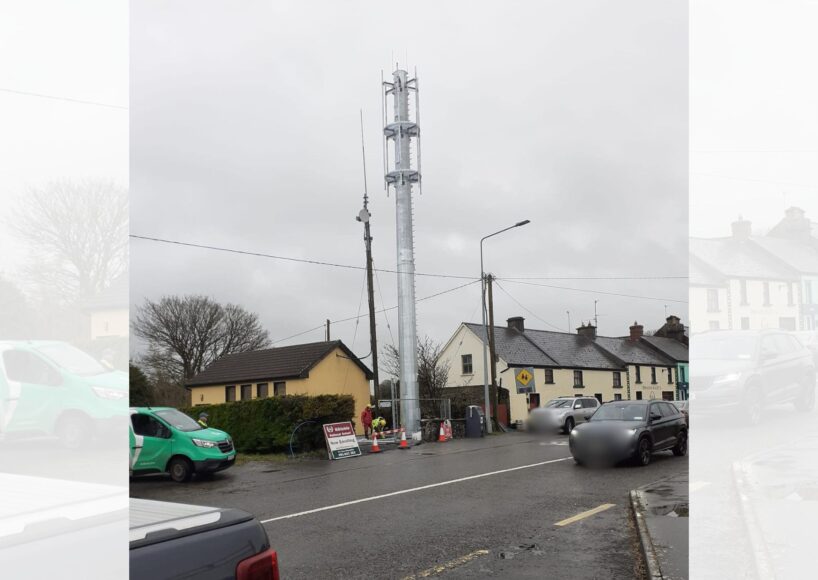
Councillor gunning to have “monstrosity” mast in Kilrickle moved elsewhere
A county councillor is taking steps to try and have what he calls a “monstrosity” of ...

Galway builders unite to voice frustration over planning process and lack of infrastructure
Home builders across Galway are voicing their frustration over what they consider are key restrai...
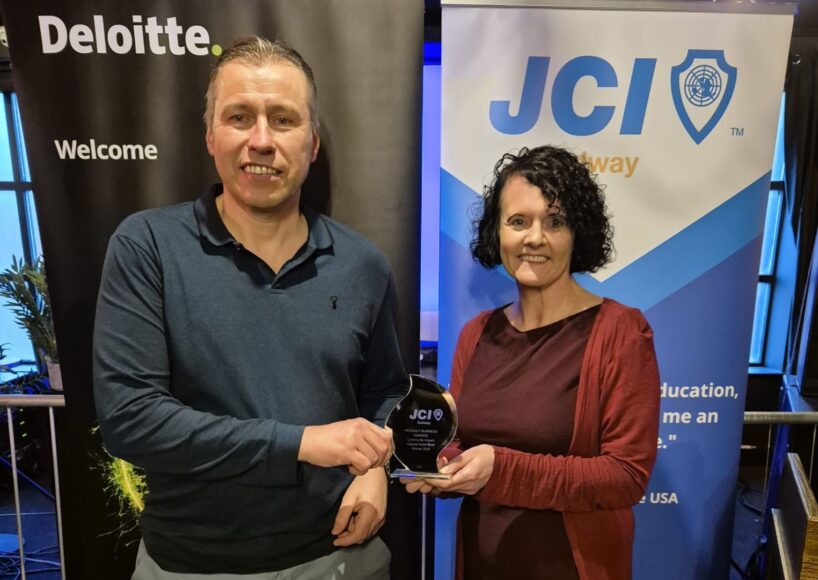
Cancer Care West wins Community Impact award
Cancer Care West has won the Community Impact category in this year’s Friendly Business Awa...

Tuam Herald appoints first female editor
The Tuam Herald, has appointed its first female Editor. Siobhán Holliman is an experienced award-...

New Stroke Hub at Croí Centre in Newcastle to be opened early 2025
A new Storke Hub at the Croí Centre in Newcastle is expected to be opened in early 2025. Construc...
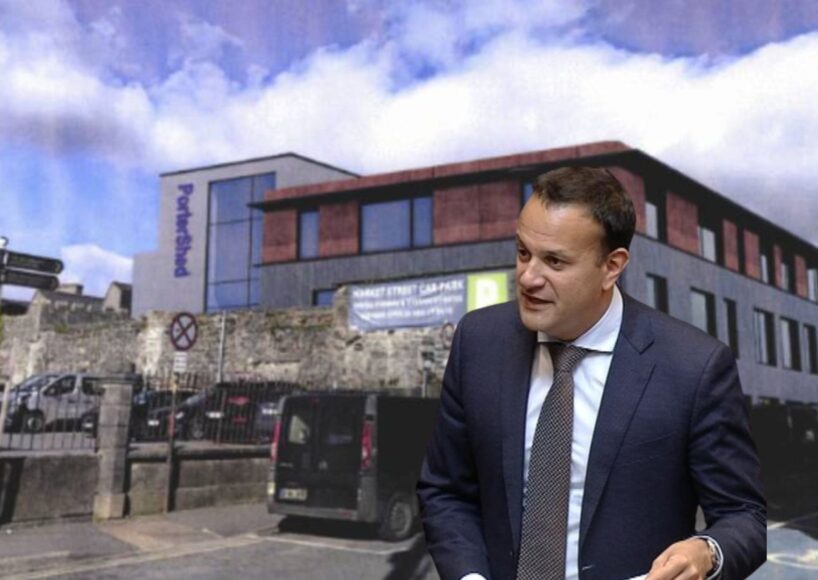
Former Taoiseach Leo Varadkar to visit Galway as part of elections campaign trail
Former Taoiseach Leo Varadkar is to visit Galway tomorrow as part of the elections campaign trail...
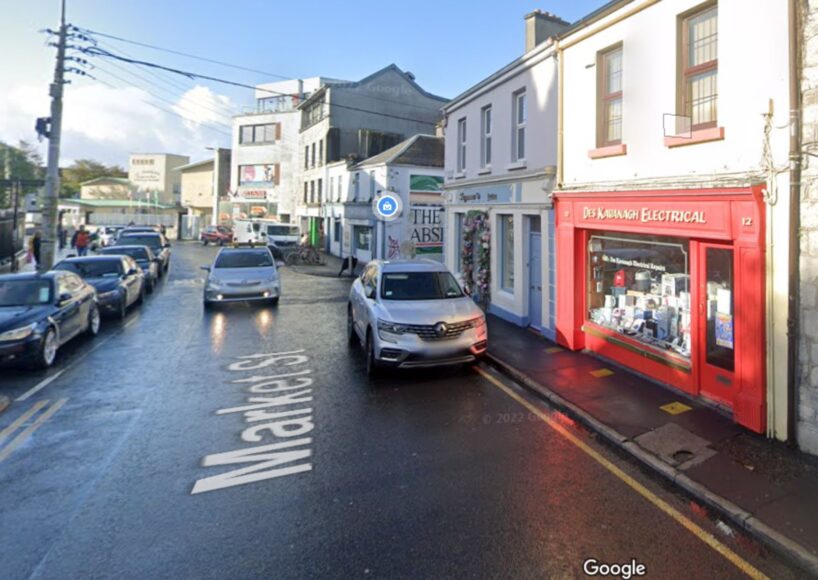
Well known electrical shop in city set to be transformed into home
A well known electrical shop in the city could be set to be transformed into a home. Desmond and ...

Clifden and Galway City among longest waiting times for driving tests
Clifden is one of the areas in the country with the longest wait times for driving tests. While G...
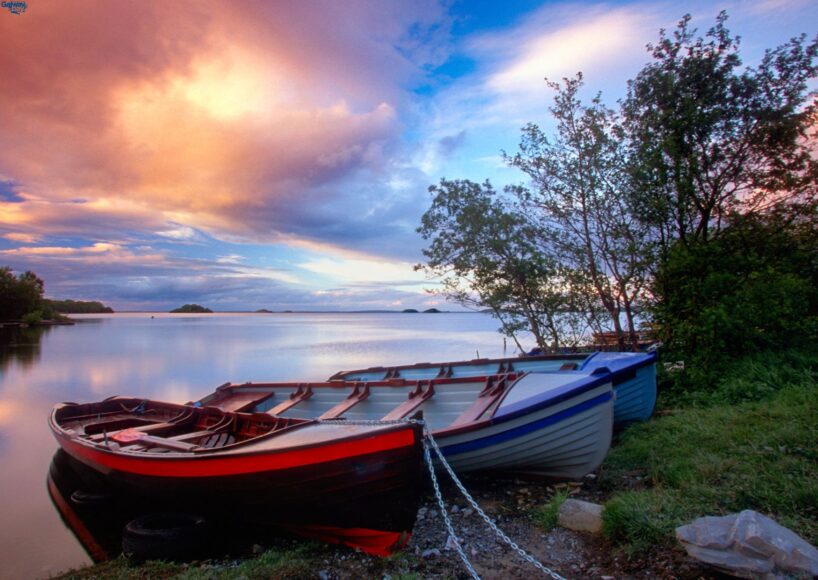
Safe Summmer Boating for the Corrib event to take place in Cong
A Safe Summmer Boating for the Corrib event will take place in Cong this evening. At the event in...
Sign Up To get Weekly Sports UPDATES




